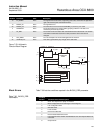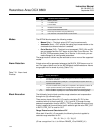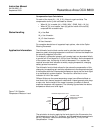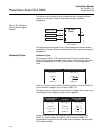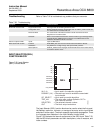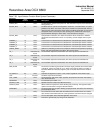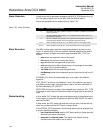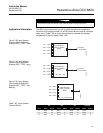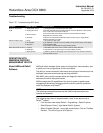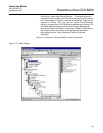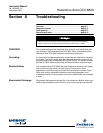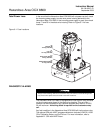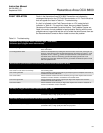
Instruction Manual
IM-106-880C, OI
September 2009
Hazardous Area OCX 8800
7-60
Alarm Detection A block alarm will be generated whenever the BLOCK_ERR has an error bit
set. The types of block error for the ISEL block are defined above.
Alarms are grouped into five levels of priority, Table 7-35.
Table 7-35. Alarm Priorities
Block Execution The ISEL function block reads the values and statuses of as many as four
inputs. To specify which of the six available methods (algorithms) is used to
select the output, configure the selector type parameter (SEL_TYPE) as
follows:
• max selects the maximum value of the inputs.
• min selects the minimum value of the inputs.
• avg calculates the average value of the inputs.
• mid calculates the middle of three inputs or the average of the middle
two inputs if four inputs are defined.
• 1st Good selects the first available good input.
• Hot Backup latches on the selected input and continues to use it until it
is bad.
If DISABLE_N is active, the associated input is not used in the selection
algorithm.
If OP_SELECT is set to a value between 1 and 4, the selection type logic is
overridden and the output value and status is set to the value and status of
the input selected by OP_SELECT.
SELECTED will have the number of the selected input unless the SEL_TYPE
is average, in which case it will have the number of inputs used to calculate its
value.
Status Handling In Auto mode, OUT reflects the value and status quality of the selected input.
If the number of inputs with Good status is less than MIN_GOOD, the output
status will be Bad.
In Man mode, the OUT status high and low limits are set to indicate that the
value is a constant and the OUT status is always Good.
In the STATUS_OPTS parameter, the following options can be selected from
to control the status handling:
• Use Uncertain as Good: sets the OUT status quality to Good when the
selected input status is Uncertain.
• Uncertain if in Manual mode: The status of the Output is set to
Uncertain when the mode is set to manual.
Priority Priority Description Number
0 The priority of an alarm condition changes to 0 after the condition that caused the
alarm is corrected.
1 An alarm condition with a priority of 1 is recognized by the system, but is not
reported to the operator.
2 An alarm condition with a priority of 2 is reported to the operator, but does not
require operator attention (such as diagnostics and system alerts).
3 to 7 Alarm conditions of priority 3 to 7 are advisory alarms of increasing priority.
8 to 15 Alarm conditions of priority 8 to 15 are critical alarms of increasing priority.




